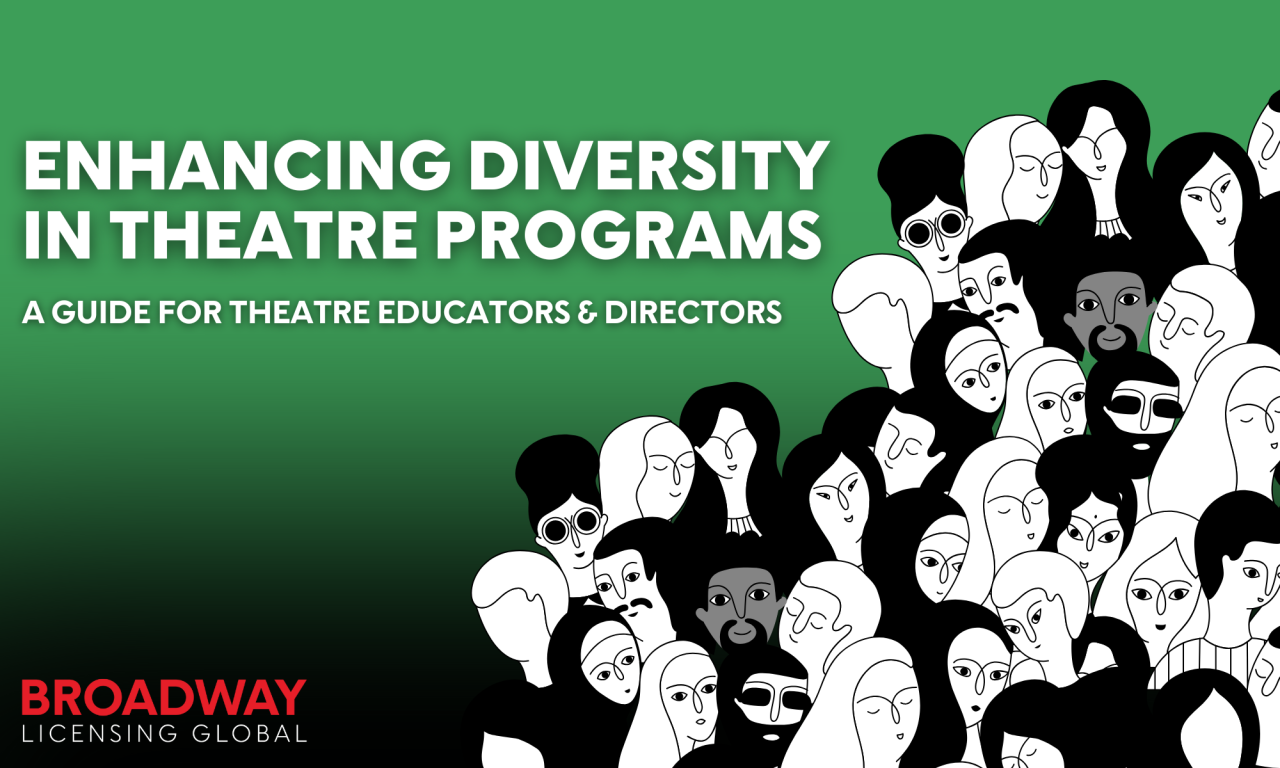In the world of theatre, diversity is not just a buzzword; it’s the essence of storytelling. The theatre is a human experience, and humanity is diverse. It brings varied perspectives, enriches narratives, and connects with a broader audience. Enhancing diversity in theatre programs—especially in educational settings—requires intentional strategies and a commitment to inclusion. Here’s a guide for educators and directors on embracing a more diverse and inclusive theatre program.
 Conduct an Honest Assessment
Conduct an Honest Assessment
Begin with an honest evaluation of your current program. Who is being represented on stage, and whose stories are being told? Who is missing? Consider not only ethnic and racial diversity but also gender, sexual orientation, disability, and socioeconomic status. This assessment can help identify areas for growth and set a benchmark for progress.
Revise Your Curriculum
Incorporate plays and musicals that reflect a variety of cultures, experiences, and perspectives. This doesn’t mean you should only select works written by or about underrepresented groups; it means balancing the classics with contemporary works that speak to a diverse society. Educating students on the history of diverse theatre movements can inspire and inform their practice.
Outreach and Recruitment
Expanding your outreach efforts can attract students from various backgrounds. Consider partnering with community organizations, schools, and social groups that work with underrepresented populations. Offer workshops or free performances to introduce theatre to a wider audience. In recruitment, emphasize the importance of diversity in your materials and messages, showing that all are welcome and valued.
 Foster an Inclusive Environment
Foster an Inclusive Environment
It is crucial to create a welcoming environment where all students feel safe and valued. This includes establishing clear policies against discrimination and harassment, facilitating open discussions about diversity and inclusion, and encouraging students to share their experiences and perspectives. Such an environment not only nurtures diversity but also creativity and empathy.
Provide Mentorship and Support
Mentorship can play a pivotal role in supporting students from underrepresented groups. Pairing students with mentors who share similar backgrounds or experiences can offer guidance, encouragement, and a sense of belonging. Additionally, providing scholarships or financial assistance can help remove barriers to participation for students from low-income families.
Encourage Diverse Casting
Practice inclusive casting by selecting actors based on their talent and suitability for the role rather than their physical appearance unless specific characteristics are essential to the part. Avoid typecasting and give all students the opportunity to explore a range of characters and stories.
 Engage in Continuous Learning
Engage in Continuous Learning
Stay informed about best practices for diversity and inclusion in theatre education. Attend workshops, join professional organizations, and engage in conversations with colleagues about creating more inclusive programs. Diversity is a dynamic concept, and strategies for inclusion can evolve over time.
Measure Progress and Adapt
Regularly review your program’s diversity goals and assess progress. Solicit feedback from students, staff, and the community to understand the impact of your efforts and identify areas for improvement. Be willing to adapt your strategies to meet the changing needs of your community and the broader societal context.
Enhancing diversity in theatre programs is an ongoing journey that enriches the educational experience for all students and fosters a more inclusive and empathetic society. By taking intentional steps and committing to continuous improvement, educators and directors can create a theatre program that truly reflects the diversity of the human experience. Let’s embrace this challenge with open hearts and minds, recognizing that the beauty of theatre lies in its power to tell every story.
This story originally appeared in The Scene on 2/17/24.





